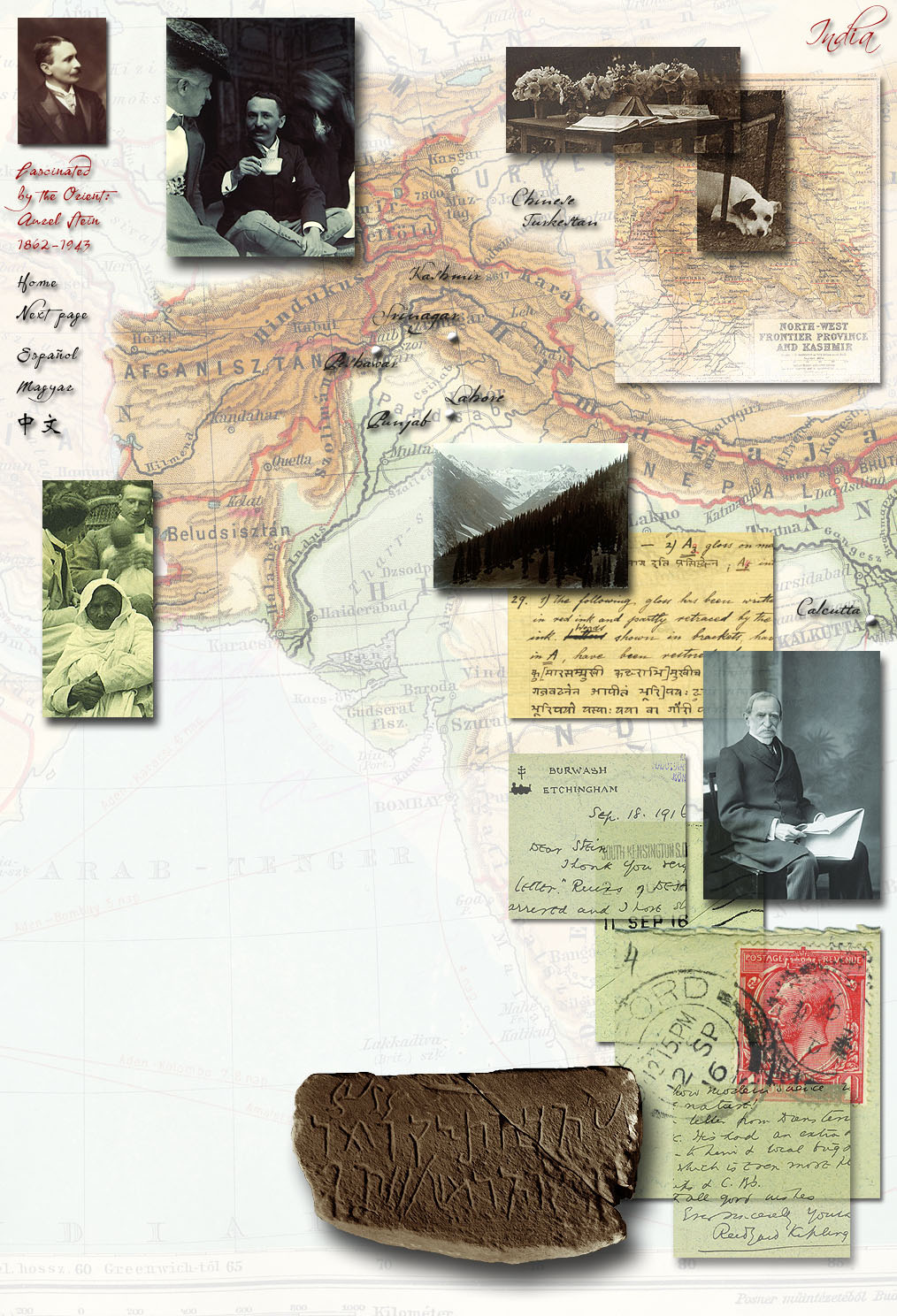


In the first decade of his
career in India, Stein worked as a philologist. He collected Sanskrit
manuscripts, and edited and translated the 12th century Kashmiri
chronicle, the Rajatarangini. For the elucidation of the
chronicle’s topographical details, his vacations were devoted to
antiquarian research in Kashmir.
 Later, in the company of Andrews, he
continued these short archaeological expeditions to neighbouring
Later, in the company of Andrews, he
continued these short archaeological expeditions to neighbouring
![]() Kashmir, where he learnt the rudiments of photography from Andrews. This
work prepared him for the long archaeological expeditions in Chinese
Central Asia.
Kashmir, where he learnt the rudiments of photography from Andrews. This
work prepared him for the long archaeological expeditions in Chinese
Central Asia.
In 1899 he was appointed Principal to the Calcutta Madrasah, but held
this post only for one year. His plans for exploration in Chinese
Turkestan were now matured, and he had the necessary official support.
